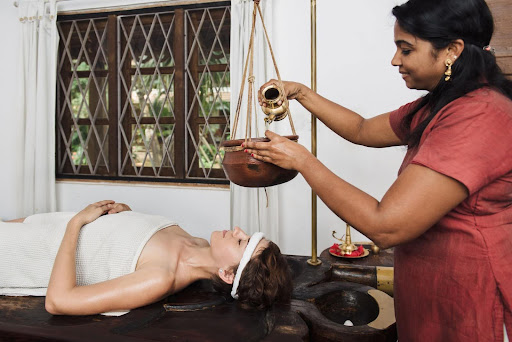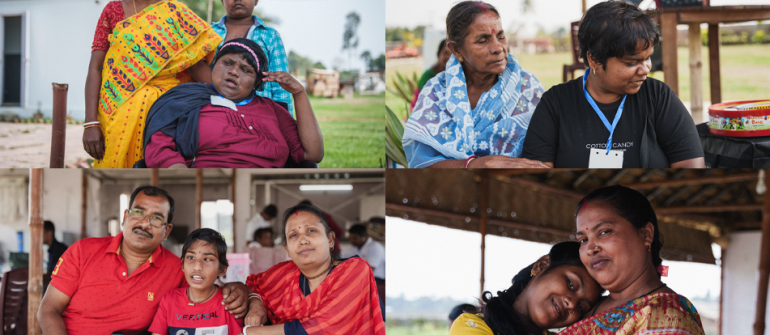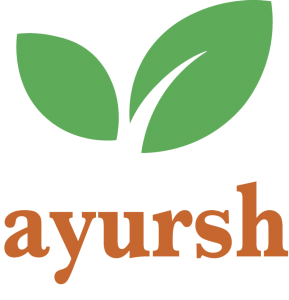Autism spectrum disorder (ASD) includes a range of neurodevelopmental disabilities characterized by repetitive behaviors, restricted interests, and challenges in social interactions. ASD is a complex condition that often involves behavioral and psychological difficulties in children. These children typically experience significant distress when their environment changes due to limited adaptive abilities. Symptoms manifest in early childhood and impact daily functioning. Additionally, children with ASD are more likely than the general population to experience co-occurring conditions such as language impairments, intellectual disabilities, and epilepsy.
Childhood disintegrative disorder (CDD), also known as disintegrative psychosis or Heller syndrome, is a rare condition now categorized under ASD. In the fifth edition of the Diagnostic and Statistical Manual of Mental Disorders (DSM-5), CDD is included within the broader autism spectrum disorder classification. CDD is distinguished by its relatively late onset and the loss of previously acquired skills in areas such as social interaction, language, and motor abilities. While the exact cause remains unknown, children with CDD typically achieve normal developmental milestones before experiencing a regression. This condition usually becomes evident after the age of three, though the onset can vary. The regression may be so sudden that children themselves become aware of the changes and may express confusion. In some cases, children might seem to respond to hallucinations, but the hallmark of the disorder is the loss of previously attained skills.
The onset of CDD can be subtle, with developmental delays becoming apparent only as the disorder progresses. This condition is often described as profoundly impactful, affecting not only the individual but also their family.
Download our app for ayurvedic treatment and therapies.
Etiology
The exact cause of autism spectrum disorder (ASD) remains unknown. The onset varies and is often insidious, lacking a clearly defined starting point. Children with ASD are at a higher risk of developing epilepsy; however, no causal relationship has been established between the two conditions.
Epidemiology
Studies suggest that the prevalence of ASD is increasing. This trend may be due to factors such as heightened awareness, overdiagnosis, or broader diagnostic criteria, but this remains unclear. The reported prevalence of ASD is approximately 1 in 68 individuals. Childhood disintegrative disorder (CDD), a rare condition within the autism spectrum, has an estimated prevalence of 1 to 2 cases per 100,000 individuals, making it about 60 times less common than autistic disorder.
Pathophysiology
There is no definitive pathology associated with ASD. Subtypes of ASD, including CDD, may involve distinct mechanisms. CDD affects children who initially achieve normal developmental milestones but later experience regression, often abruptly. While the regression typically occurs around the fourth year of life, variability exists. Some researchers have hypothesized a link to childhood dementia, suggesting the deposition of amyloid in the brain as a potential cause, but this theory has not been conclusively proven.
History and Physical Examination

Symptoms of ASD typically become apparent by the age of two. In CDD specifically, about one-third of affected children experience skill regression within this timeframe. Among ASD subtypes, CDD is associated with the poorest outcomes, with significant impacts on cognitive and communication abilities. A prodromal phase is often observed, marked by episodes of anxiety and terror without consistent medical, environmental, or psychosocial triggers.
Children with CDD initially exhibit normal development, achieving age-appropriate skills in verbal and nonverbal communication, social interaction, motor abilities, play, and self-care. However, between the ages of 2 and 10, they experience near-complete loss of previously acquired skills in at least two of the following six functional areas:
- Receptive language skills: Understanding and processing spoken language.
- Expressive language skills: Producing speech to communicate effectively.
- Social and self-care skills: Building relationships and performing daily personal tasks.
- Bowel and bladder control: Managing elimination functions.
- Motor skills: Coordinating physical movements.
- Play skills: Engaging in age-appropriate recreational activities.
This regression is accompanied by functional impairments in social interactions and communication.
Suggested – Healing Ent Disorders Naturally: The Ayurvedic Way
The 10th revision of the International Statistical Classification of Diseases and Related Health Problems (ICD-10) Criteria for Childhood Disintegrative Disorder Diagnosis (WHO)
Normal development up to the age of at least two years; the presence of normal age-appropriate milestones are achieved in the areas of communication, social relationships, play, and adaptive behavior at age two years or later are required for this diagnosis.
A definite loss of previously acquired skills at the onset of the disorder. The diagnosis requires a clinically significant loss of skills (and not just a failure to use them in certain situations) in at least 2 of the following areas:
- Expressive or receptive language
- Play
- Social skills or adaptive behavior
- Bowel or bladder control
- Motor skills
Qualitatively abnormal social functioning, manifests in at least 2 of the following areas:
- Qualitative abnormalities in reciprocal social interaction (of the type defined for autism)
- Qualitative abnormalities in communication (of the type defined for autism)
- Restricted, repetitive, and stereotyped patterns of behavior, interests, and activities, including motor stereotypies and mannerisms
- General loss of interest in objects and the environment
- The disorder is not attributable to the other varieties of pervasive developmental disorder acquired aphasia with epilepsy, elective mutism, schizophrenia, and Rett syndrome.
Consult with Dr. Sri Ranjani to discover Ayursh’s personalized Panchakarma solutions tailored to your child’s specific needs.
Ayurveda Perspective
The features of autism closely resemble those of Unmada, a mental disorder described in Ayurvedic classics, characterized by mental confusion and related symptoms. According to Ayurveda, various etiological factors disrupt the connection between Atma (the self) and Manas (the mind), leading to the vitiation of Manovaha Srotas (channels of consciousness). Additionally, the imbalance of the three Doshas—Vata, Pitta, and Kapha—contributes to the manifestation of Unmada.
In childhood autism, the vitiation of Manovaha Srotas combined with Tridosha Dushti is considered the fundamental cause. This imbalance disrupts Dhee (intellect), Dhriti (retention), and Smriti (memory), causing irregularities in Kala (time) and Karma (action). Consequently, this results in improper sensory engagement with their respective objects (Asatmendriyartha Samyoga), manifesting as inattention, hyperactivity, and impulsivity.
Ayurveda Literature Review
According to Acharya Charaka, Unmada is a Manas Vyadhi (mental disorder) characterized by an unsettled state of the Manas (mind), Buddhi (intellect), Samjna (consciousness), Gnana (perception), Smriti (memory), Bhakti (inclination), Sheela (character), Chesta (behavior), and Achara (conduct).
To get treatment of Panchakarma Virechana Body Detox, Call to Ayursh Ayurveda
Nidana (Etiology)
The causes (Hetu) of Unmada are categorized as follows:
- Aaharaja Hetu (Dietary Causes)
- Consumption of incompatible, unclean, or impure foods, such as certain combinations of fruits and milk.
- Heavy diets, including non-vegetarian food, curd (Dadhi), and bakery products, which aggravate the Tridoshas.
- Viharaja Hetu (Lifestyle Causes)
- Disrespecting Dev (deities), Guru (teachers), and Brahmins (learned individuals).
- Excessive emotions such as Bhaya (fear) and Harsha (extreme joy), which disrupt mental equilibrium and increase Rajas and Tamas—the mental Doshas.
- Agantu Unmada (externally induced mental disorders) can arise from actions such as Himsa (cruelty), Rati (excessive lust), and Abhyarchana (extortion), leading to disturbances in mental functions.
Etiopathogenesis
Samprapti (Pathogenesis) of Autism According to Ayurveda
In Ayurvedic literature, the acquisition of knowledge occurs through a sequence of events involving the conjunction of Atma (the self), Manas (mind), Indriya (sense organs), and Indriyartha (objects of perception).
- The Atma is responsible for cognition, while the Manas serves as the substratum for the Indriyas to perceive Indriyartha.
- The mental constitution of the fetus is influenced by the Satwa (mind) of the parents, sensory experiences, the actions of the pregnant mother, and past deeds.
In children with autism, the connection between Atma and Manas is disrupted, resulting in Manovaha-Sroto-Dushti (vitiation of the channels of consciousness that flow through the mind), along with Tridosha Dusti (vitiation of the three doshas).
This etiopathology aligns with the description of Unmada in Ayurvedic classics, a disorder characterized by mental confusion and disruption of normal mental functions.
Characteristics
The features of Unmada as described in Ayurvedic classics are:
- Manovibhrama (Perversion of Mind): The individual fails to focus on appropriate matters and instead fixates on irrelevant or unsuitable thoughts.
- Buddhi Vibhrama (Perversion of Intellect): Misinterpretation of eternal truths as non-eternal and perceiving advantageous aspects as disadvantageous.
- Samjnajnana Vibhrama (Impaired Sensory Perception): Disturbances in perceiving sensory inputs.
- Smruti Vibhrama (Impairment of Memory): Loss or distortion of memory.
- Bhakti Vibhrama (Abnormal Desires): Irregular and inappropriate desires or inclinations.
- Sheela Vibhrama (Inappropriate Manners and Behaviors): Exhibiting manners and behaviors that deviate from societal norms.
- Cesta Vibhrama (Abnormal Activities): Engaging in unusual or erratic physical actions.
- Achara Vibhrama (Loss of Learned Skills): Deterioration or loss of previously acquired skills.
By analyzing the etiopathogenesis and clinical manifestations of autism, it can be categorized under the broad spectrum of Unmada.
According to Ayurvedic classics, Garbhopaghatakara Bhavas (prenatal factors that harm the fetus) are considered significant etiological contributors. The etiopathogenic factors and treatment approaches for childhood autism vary between individuals, highlighting the importance of personalized care.
Treatment of Autism According to Ayurveda

The Ayurvedic management of autism is deeply rooted in the classical treatment protocols for Unmada (mental disorders), and is found to be highly effective. The core treatments focus on restoring balance to the mind and body, addressing both the root causes and symptoms of autism.
Classical Ayurvedic Therapies:
- Deepana and Pachana: These procedures use specific drugs to enhance digestion and metabolism.
- Snehapana: Medicated ghee is consumed to lubricate and nourish the body.
- Mridu Sodhana: Gentle purifications such as emesis or purgation are employed to cleanse the body.
- Basti: Both Niruha Basti (decoction enema) and Sneha Basti (oil enema) help in detoxifying the body and restoring balance.
- Siro Virechana and Nasya: Medicated oils are used for nasal administration to clear blockages and improve cognitive function.
- Samjna Prabodhana: Medications are provided to stimulate the mind and enhance mental clarity.
Additional Treatment Modalities:
In addition to purificatory treatments, several therapies help in enhancing brain function and managing behavioral issues:
- Abhyanga: Oil massage of the head and body to promote relaxation and mental clarity.
- Siro-Pichu: A cotton piece soaked in medicated oil is placed on the head to improve brain function.
- Sirodhara: A continuous stream of medicated oil is poured over the forehead to calm the mind.
- Sirolepam: A medicinal paste is applied to the head to soothe the nervous system.
- Takra Dhara: A stream of medicated buttermilk is poured over the forehead for mental relaxation and nourishment.
These treatments, collectively known as Unmada Chikitsa, are aimed at stimulating cognitive development, reducing troublesome behaviors, and enhancing overall mental clarity. According to Charaka Samhita, the avoidance of meat, intoxicants, and incompatible foods, along with following cleanliness and maintaining good mental strength, is crucial in preventing mental disorders like Unmada. With proper Ayurvedic interventions, individuals can regain clarity in sensory perception, intellect, self-awareness, and mental well-being.
Holistic Ayurvedic Approach to Autism:
Ayurveda addresses autism through a comprehensive approach involving pharmacotherapy, Panchakarma (detoxification therapies), and psychotherapy.
- Daiva-Vyapashraya Chikitsa (Spiritual Therapy): Ayurveda emphasizes the role of spirituality in mental health. Practices such as mantra recitation, wearing gems, offering prayers, fasting, and visiting sacred places are believed to strengthen self-confidence and mental resilience. These spiritual practices help individuals regain mental balance and emotional stability.
- Satvavajaya Chikitsa (Psychotherapy): This therapy focuses on controlling the mind and protecting it from negative influences that can lead to mental disturbances. Key components of Satvavajaya include:
- Mano Nigraha: Regulating the mind by limiting exposure to unwholesome influences.
- Dhee-Dhairyaatmadi Vijnanam: Providing a deeper understanding of the mind to facilitate better emotional control and mental health. Positive emotions are cultivated to replace negative ones, contributing to psychological well-being.
- Yuktivyapashraya Chikitsa: This approach combines the logical use of medicines and modification of diet and lifestyle to restore balance. It includes the use of Medhya Rasayana (cognitive enhancing medicines) and Doshahara Ousadha (medicines that balance the doshas) to stabilize the mind.
Dietary Management:
Nutritional imbalances are common in children with ADHD, which is often associated with hyperactivity and other behavioral issues. Ayurvedic dietary management emphasizes the importance of balanced nutrition for proper mental and physical development. Parents are advised to eliminate refined carbohydrates, sugars, processed foods, and additives from the child’s diet. A clean, wholesome diet is essential to reduce hyperactivity and improve overall well-being.
By adopting Ayurvedic treatments, especially Unmada Chikitsa, autism’s underlying triggers can be addressed, leading to significant improvements in quality of life. Although autism is regarded as a lifelong condition due to genetic predisposition (Bija Dosha), long-term Ayurvedic intervention can help alleviate symptoms and improve mental clarity, behavioral responses, and emotional stability.
Conclusion
A systematic Ayurvedic treatment approach, emphasizing Vata-Pittahara Chikitsa (therapies to pacify Vata and Pitta doshas), offers significant relief in managing autism. The treatment protocol incorporates a holistic regimen, including:
- Deepana-Pachana: Enhancing the digestive fire with targeted formulations.
- Snehana-Swedana: Administering oleation and sudation therapies with lipophilic drugs.
- Sroto-Sodhana: Cleansing bodily channels to improve metabolism and modulate the gut microbiome.
- Brumhana: Providing nourishment therapies to support growth and development.
- Medhya Rasayana: Using herbal formulations to enhance intellectual and cognitive functions.
- Pathya Karma: Adopting a congenial diet and lifestyle to maintain balance and well-being.
While Ayurveda provides a comprehensive understanding of the etiopathogenesis and management of autism, a combined treatment approach incorporating other therapies is often essential for optimal results. These may include behavior therapy, speech-language therapy, play-based therapy, physical therapy, occupational therapy, and nutritional therapy. Together, these modalities address the condition from multiple dimensions, fostering cognitive, emotional, and physical development.
Such an integrative approach underscores the importance of leveraging both Ayurveda and modern therapeutic interventions to enhance the quality of life for individuals with autism, offering holistic and effective solutions for their overall well-being.
Ayursh offers home-based therapies that specialize in Panchakarma treatments, promoting natural healing and enhancing overall wellness within the comfort of your home. These therapies are designed to detoxify the body, balance doshas, and support cognitive and physical development for holistic growth.
Dr. Sri Ranjani Bhat will recommend suitable therapies tailored to address your specific health concerns, ensuring a holistic approach to wellness.
Reference Link – Stroke: What It Is, Causes, Symptoms, Treatment & Types



